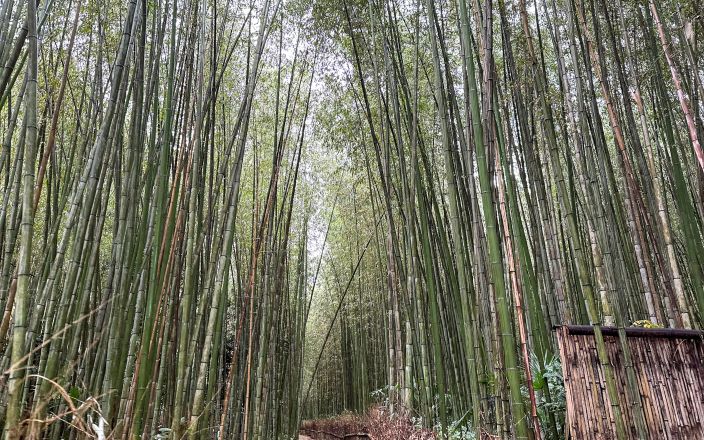Jack Nicholas boasts 18 wins in the four major tournaments (6 Masters, 5 US Professionals, 4 US, 3 British), and is a famous player called the “Monarch” of golf. In 1966, he became the fourth player in history to complete the career Grand Slam since Gene Sarazen in 1935, but after that, Tiger Woods achieved it in 2000, and it is a difficult record that no player has achieved for 34 years.
Furthermore, in 1978, he achieved the Triple Grand Slam, a player with three or more wins in the four majors, and also won the four major senior titles, making him the only player to win both the majors and the four major titles.
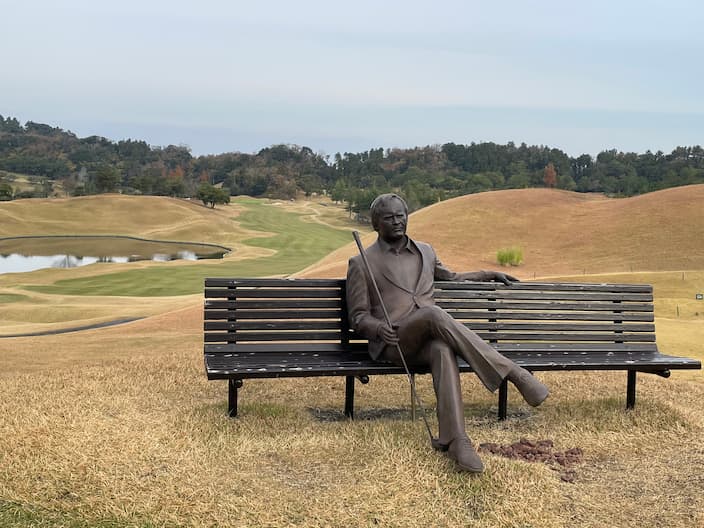
For Japanese people, the 80th U.S. Open held in 1980 at the Balthusrol Golf Club in the suburbs of New York City is also remembered. He defeated Japan’s top professional Isao Aoki in a historic mortal match for four days in the same group and won the championship. When I played the course in later years, I was proud to see trainers and T-shirts with motifs of the fight between Nicklaus and Aoki in the club shop. In addition, Aoki’s 2nd place at the major tournament at this time was the best record for a Japanese player for 41 years until Hideki Matsuyama won the Masters in 2021.
Jack Nicholas is such a legendary player, but he also has a great talent as a golf course designer, creating about 180 famous courses around the world.
His course design philosophy is clear and is said to be summarized in two concepts: “Visibility” and “Containment”. Visibility means that the player can see the whole course from the teeing area and it is easy to make a strategy. Containment is to shape the course so that the ball in play stays within the course as much as possible. For example, the sides of the fairway are raised, and the green is shaped like a mortar instead of a bowl to prevent the ball from rolling out easily. These are the thoughts that good shots should be rewarded from the player’s point of view. However, these are just concepts, and while the actual course makes full use of the natural topography and beauty, on the other hand, hazards such as ponds and bunkers are arranged in a strategic layout, making it rather a challenging course.
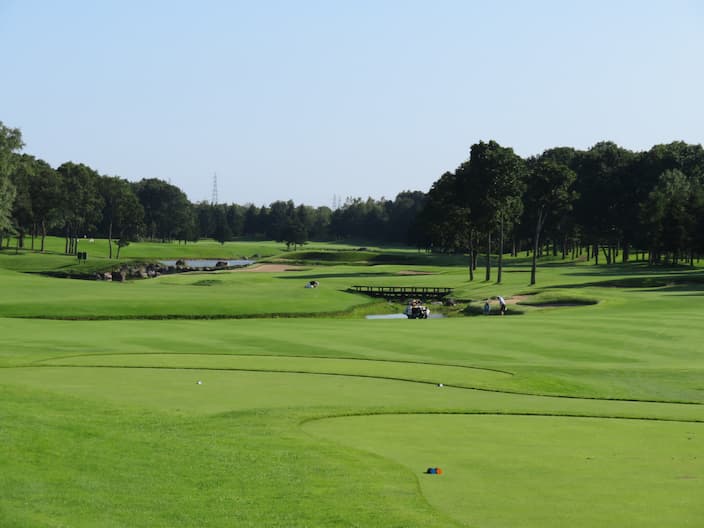
In Japan, there are nearly 30 golf courses associated with Nicklaus throughout the country, all of which are famous as American-style courses that combine dynamic and beautiful scenery with strategic layouts. Among them, the most famous and difficult ones are “Hokkaido Classic Golf Club”, “Ishioka Golf Club” and “Oakmont Golf Club”.And in Chiba Prefecture, there is “Tokyo Classic Club” which opened in 2016, which is said to be his last work, and “Kazusa Monarch Country Club” which I will introduce this time.
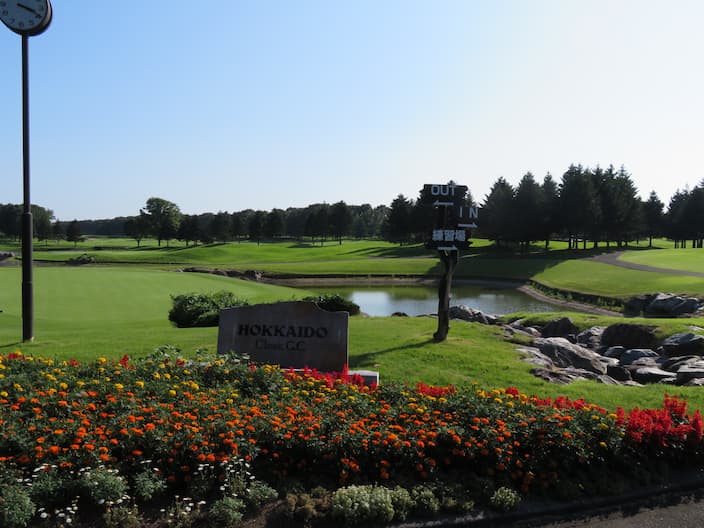

This “Kazusa Monarch Country Club” is a highly challenging course with a highly strategic course layout that seems to have been designed by Nicklaus, such as winding fairways, many bunkers, and a large, high-speed green with large undulations. A hilly course located almost in the center of the Boso Peninsula, all holes have gentle slopes, and the entire course can be viewed from the teeing area, reflecting Nikolaus’ design philosophy. The 8th hole has the largest difference in elevation, and is a thrilling specialty short hole that aims at the green 20m below the waterfall.
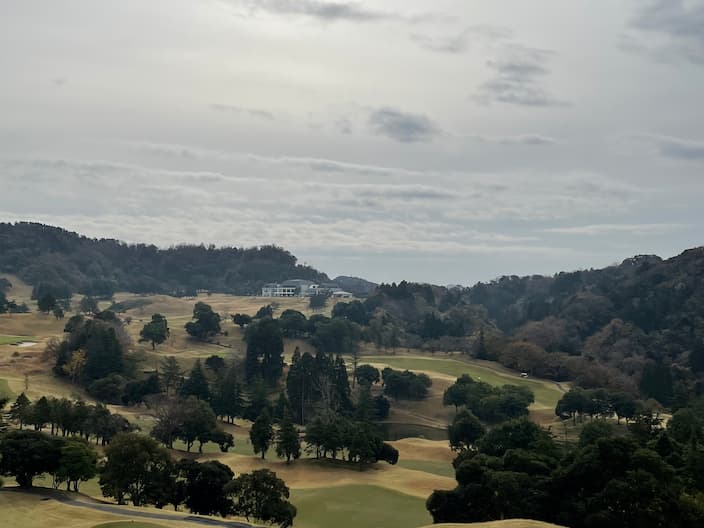
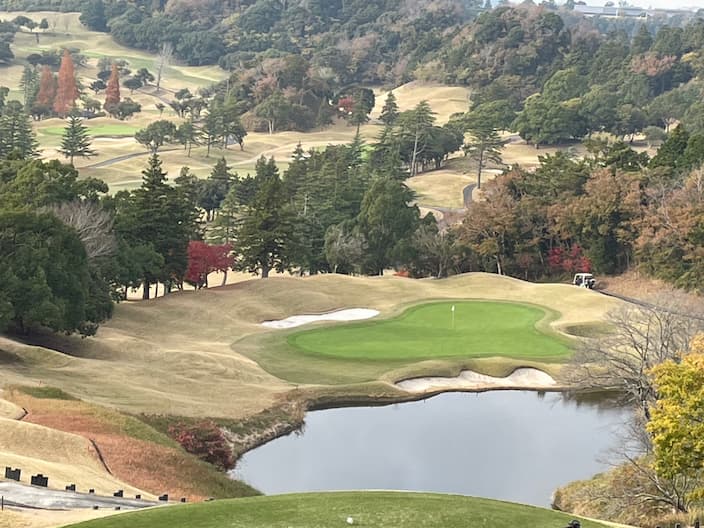
Along with the beautiful, well-manicured course, the chalk-white clubhouse perched on a hill is photogenic and has been the setting for many golf TV shows. On the hill in front of the starting hole is a seated bronze statue of course designer Jack Nicholas, who gently looks at the players as they practice on the putting green before the start.
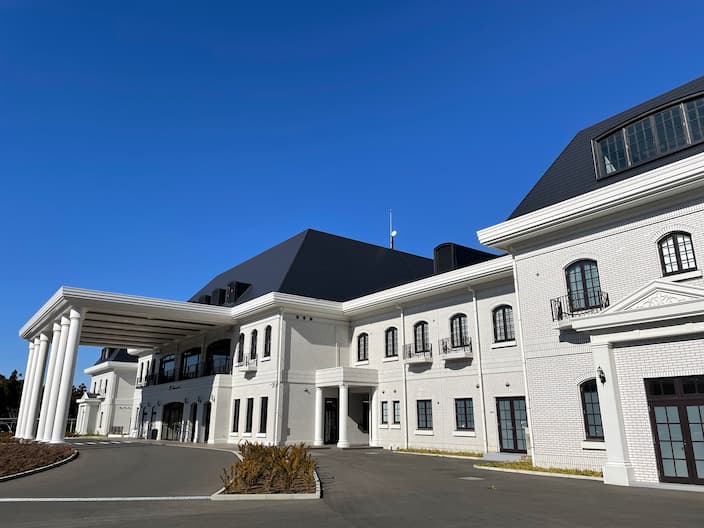
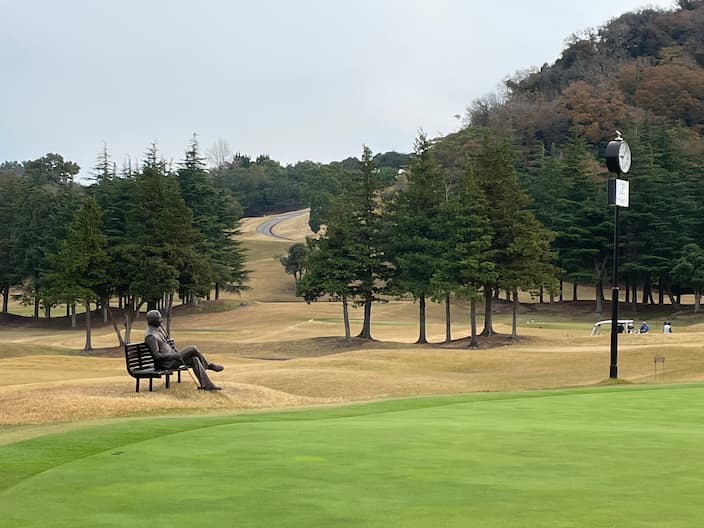
In particular, the clubhouse, which has just been renewed in 2021, is a magnificent building with a beautiful white-based appearance that makes you think of a royal palace in Northern Europe. The lobby is elegantly decorated with wood grain, the locker rooms and baths are brand new and functional, and the restaurant has an open atrium ceiling and large glass windows overlooking the course. In addition, it seems that there was also an accommodation facility before, but it was suspended now.
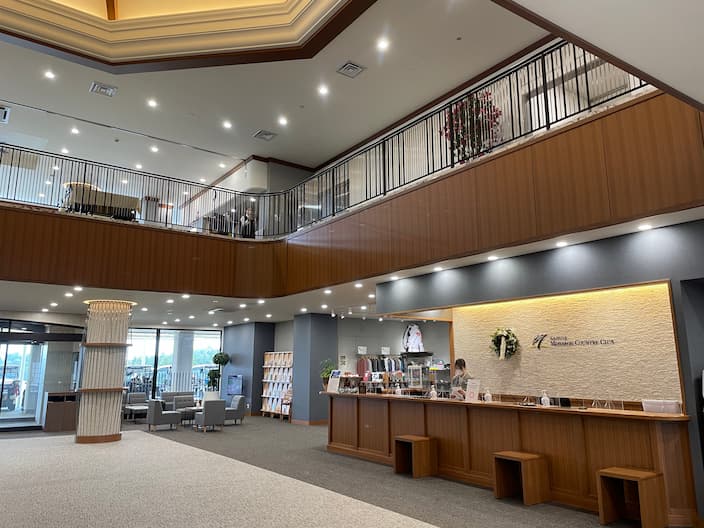
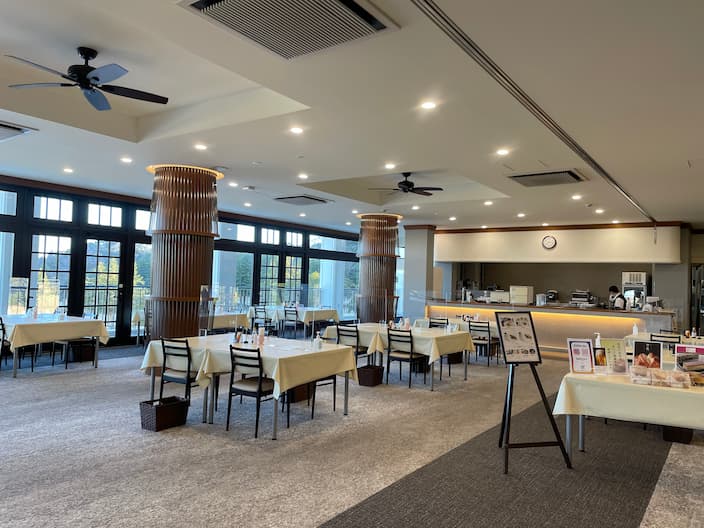
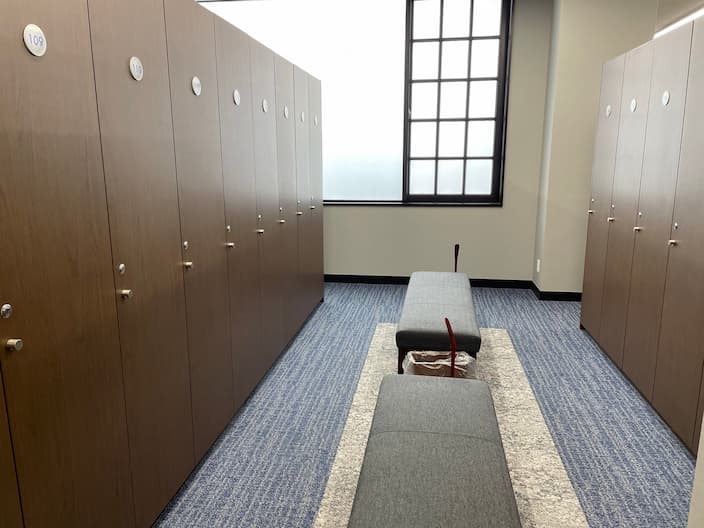
It opened in 1984 under the name of “Kazusa Golf Club”, when a financial company that was doing well at the time invested a large amount of money to build a gorgeous course. Since then, the ownership and management have changed several times, and the name has changed to the present day. It is said that the name “Monarch” was inspired by the course designer Jack Nicholas, the emperor of golf. One theory is that the name comes from the monarch butterfly, a migratory butterfly that inhabits the North American continent and can fly 3,000 kilometers north to south. Is it a longing for that flight distance?
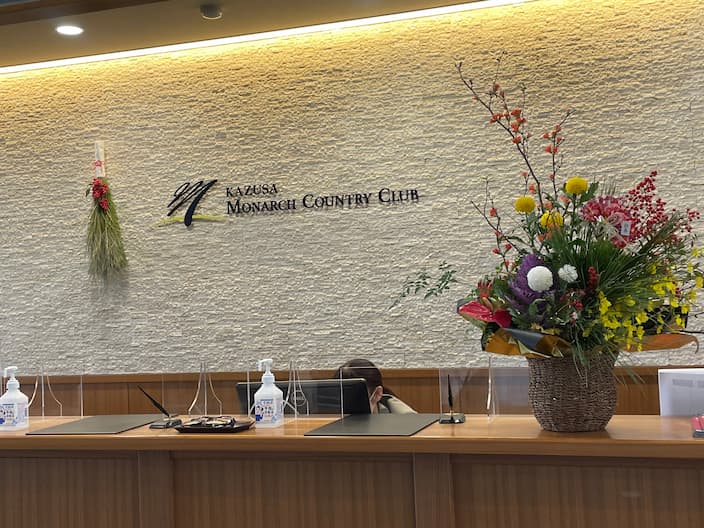
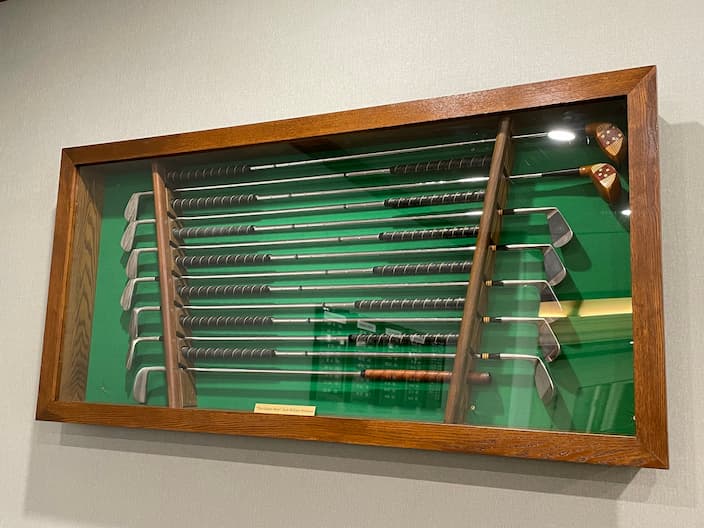
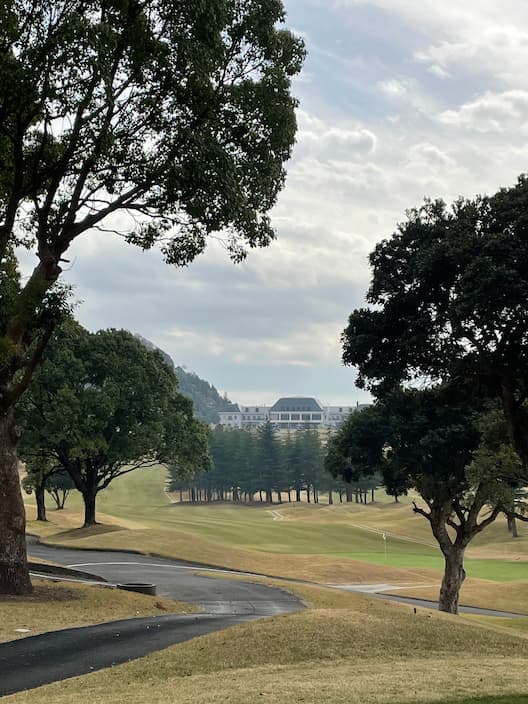
Let’s take a look at the main hall. The 1st hole (554 yards, par 5) is a long hole with a wide fairway. The downhill is gentle and the fairway is slightly S-shaped, but it is a pleasant hole where you can swing the club freely.
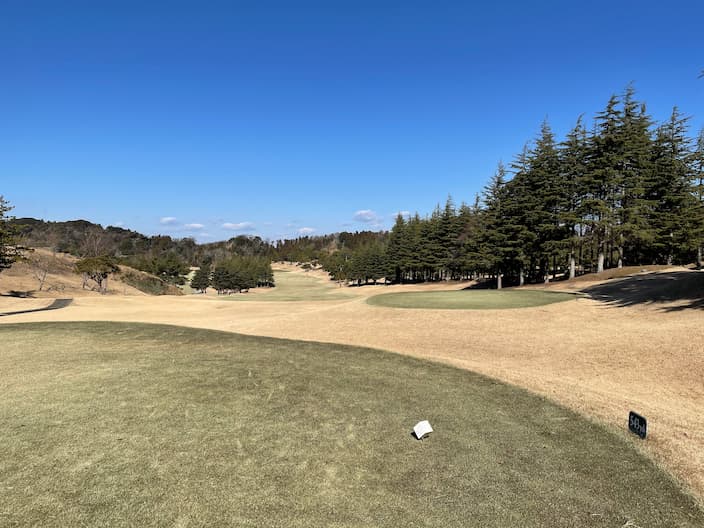
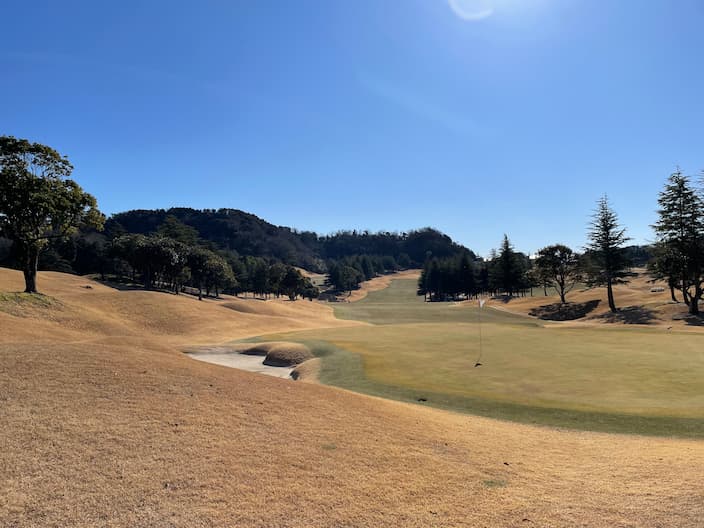
The 2nd hole (347 yards, par 4) is even more spacious and relatively short, so you can aim for par, but be careful as there are cross bunkers on the left and right of the fairway.
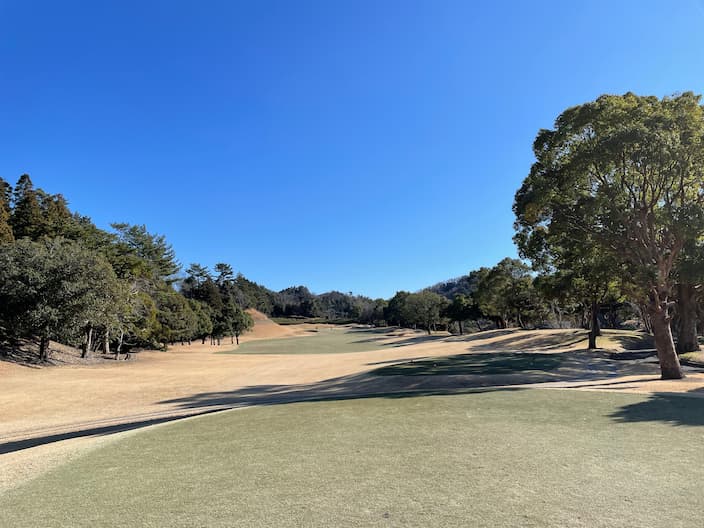
The 3rd hole (157 yards, par 3) is a short hole with a green that spreads left and right. There is a large bunker guarding the front of the green, so be careful not to get caught in it and aim for the pin dead.
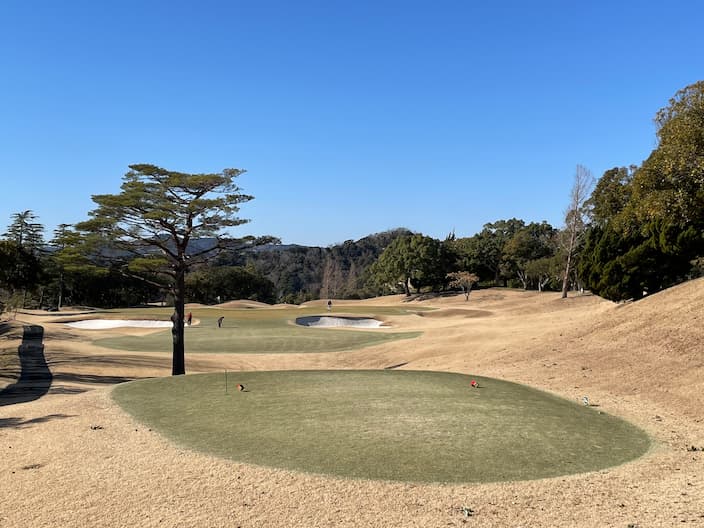
The 4th hole (410 yards, par 4) is a relatively long middle hole, but there is a large pond in front of the teeing area, so you will feel pressure when hitting the tee shot. The opposite bank has a steep downward slope toward the pond, and if you do not catch the fairway firmly, the ball will return and enter the pond. After crossing the pond, the fairway curves sharply to the left, so you need to attack from the right side.
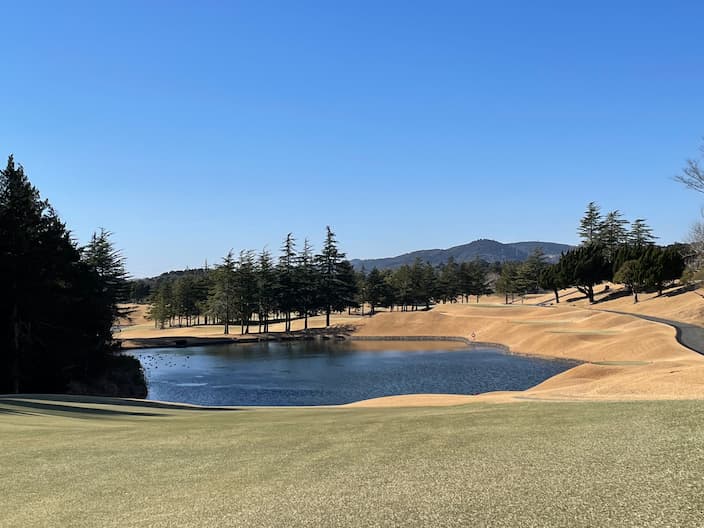

The 7th hole (344 yards, par 4) is a relatively short middle hole, but there are large bunkers across the fairway around 220 yards, which can be an obstacle depending on the distance of the tee shot.
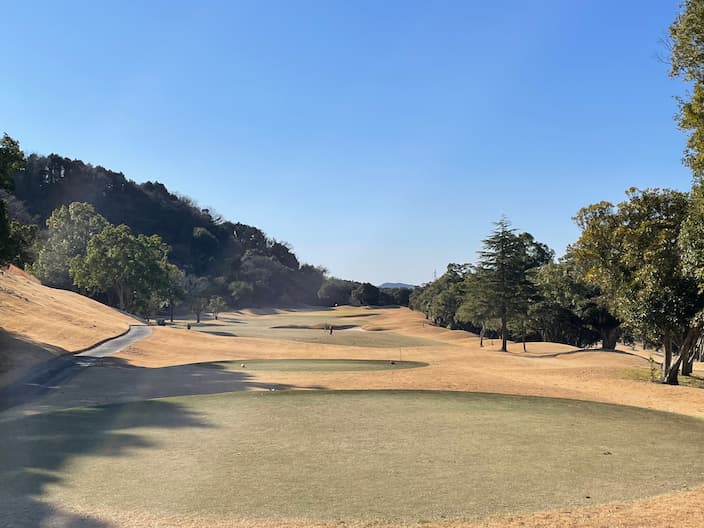
The 8th hole (177 yards, par 3) is a famous short hole where players aim from the top of the mountain to a small green beyond the pond below. It’s a beautiful hole like a miniature garden, but the distance is long, it’s easily affected by the wind, and there’s a lot of psychological pressure, so it’s difficult to get an accurate shot of the green.
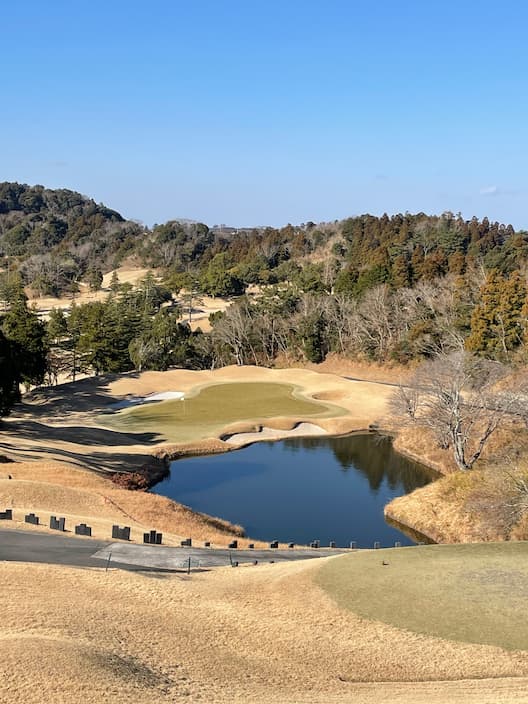
The starting hole in the second half (539 yards, par 5) is a downhill long hole that seems to have been designed by Nicolaus so that the entire course can be seen clearly. There is a large pond on the left side of the fairway that gently curves to the left, so players should attack safely from the direction of the slope on the right. Also, be careful as there is a large bunker guarding the right front of the green.
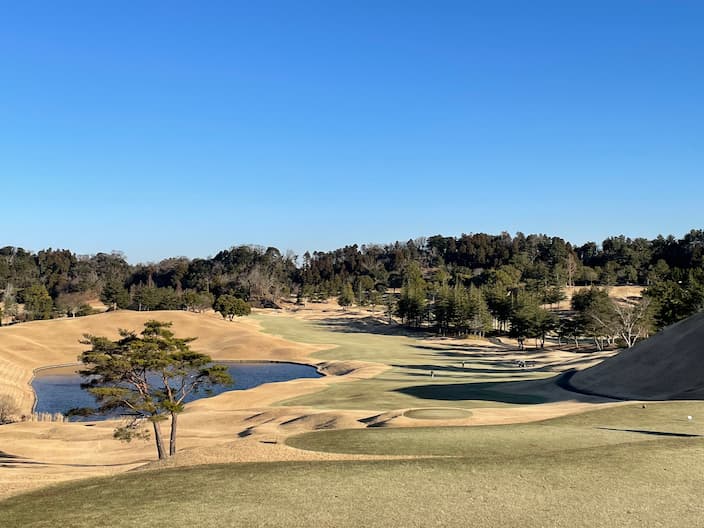

The 12th hole (122 yards, par 3) is a short hole with a wide fairway and a large green. The green is surrounded by many bunkers, including a large bunker with an island inside. Therefore, players want to avoid these holes to get par.
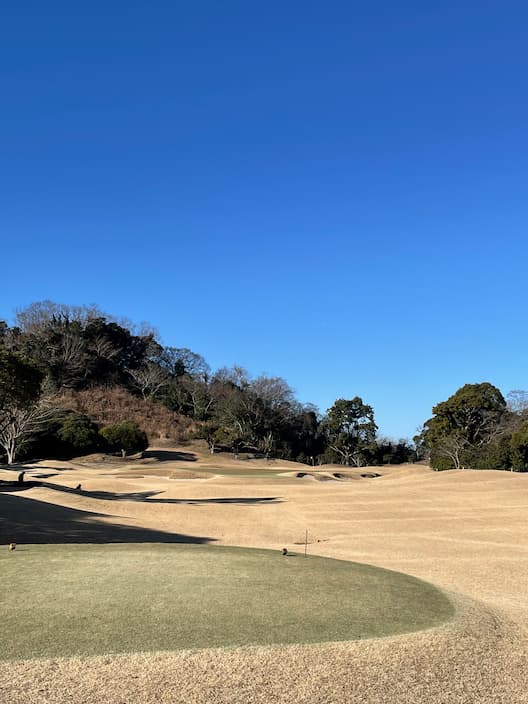
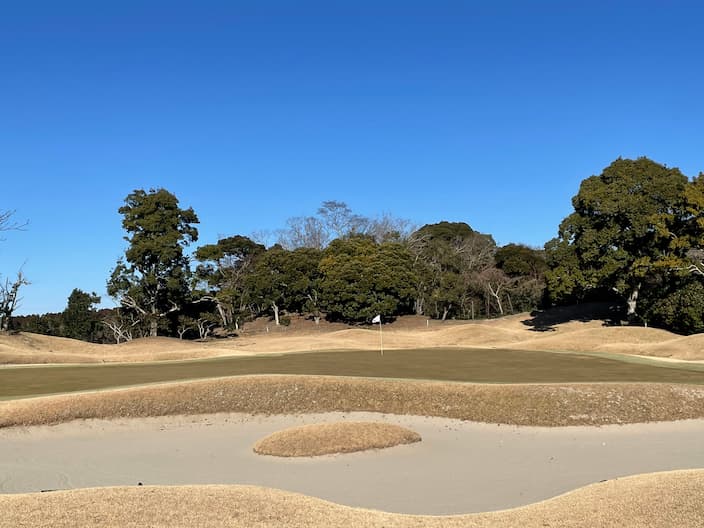
The 13th (381 yards, par 4) is an impressive downhill middle hole with a cut fairway in the middle. The fairway ahead is surrounded by countless cross bunkers. After the cross bunkers, guard bunkers surround the green. There are 13 bunkers in total, and it looks like a roulette, and you have to be prepared to get caught in some banker.

The 15th hole (500 yards, par 5) This is also a long hole with two fairways and a large bunker lying between the two fairways. Players need to successfully cross these bunkers on their second shot and aim for the green at the end of the fairway that curves to the right. However, there are many bunkers guarding the right front of the green, so it is safer to attack from the left even if you take a detour.
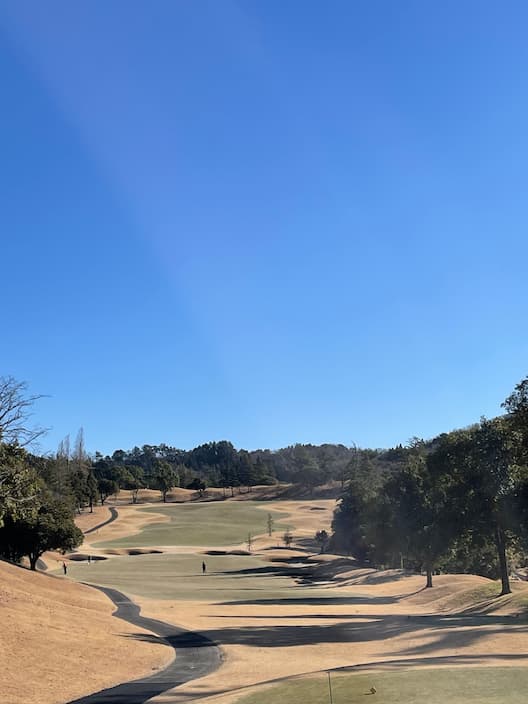

The 16th hole (179 yards, par 3) is a short hole with a large pond on the left side of the teeing area. The left side of the fairway slopes toward the pond, so draw hitters must be especially careful, and it is safer to aim for the slope on the right side of the green.
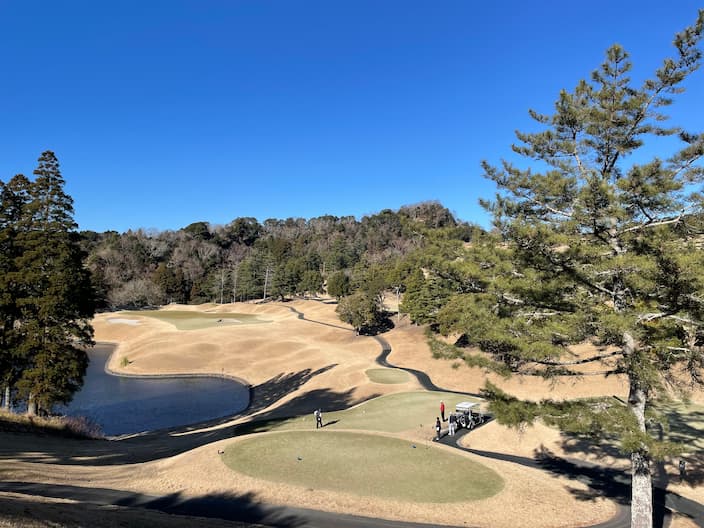
The 18th hole (349 yards, par 4) The final hole is a relatively short middle hole that goes straight back over the ridge to the beautiful white clubhouse. There is a large pond between the 10th hole on the left, but it doesn’t bother you so much. Rather, if you avoid the pond and aim to the right, you’ll soon see an OB line and cross bunkers, so be careful.
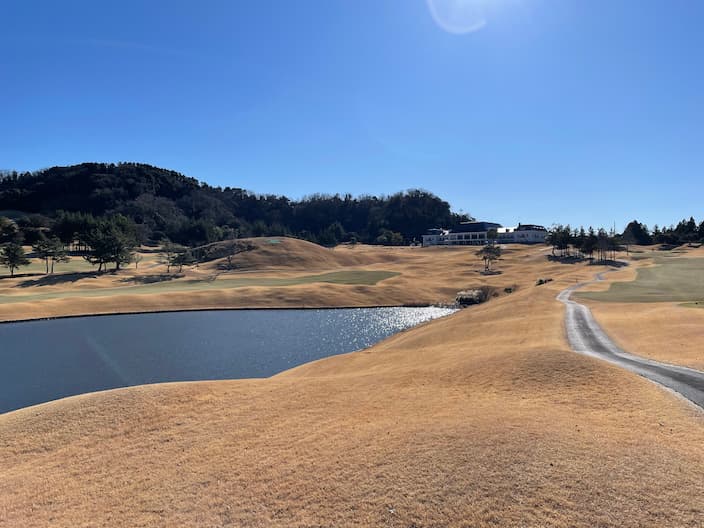
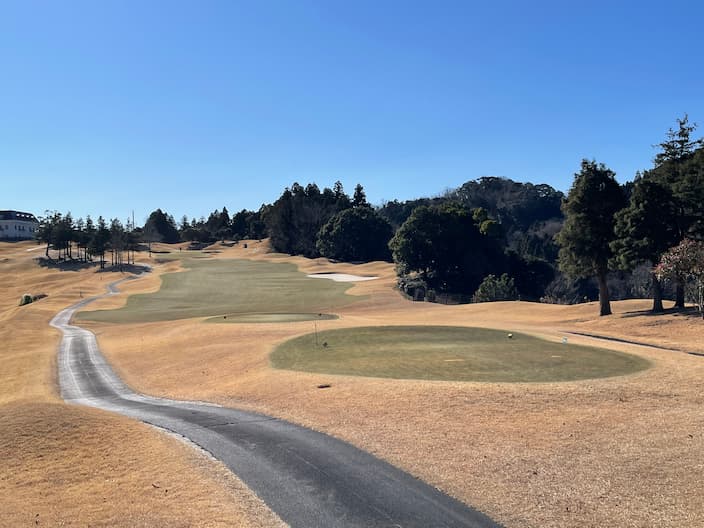
There is also a golf school called “Tee-Up” next to the final hole.
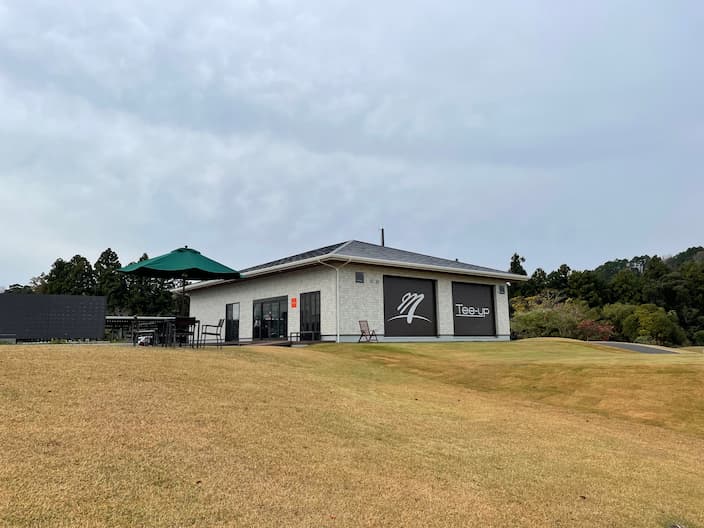
Although it is conveniently located just a little over an hour’s drive from Tokyo, the clubhouse and course have a beautiful and elegant atmosphere that makes you feel as if you are in a golf course in an overseas resort.
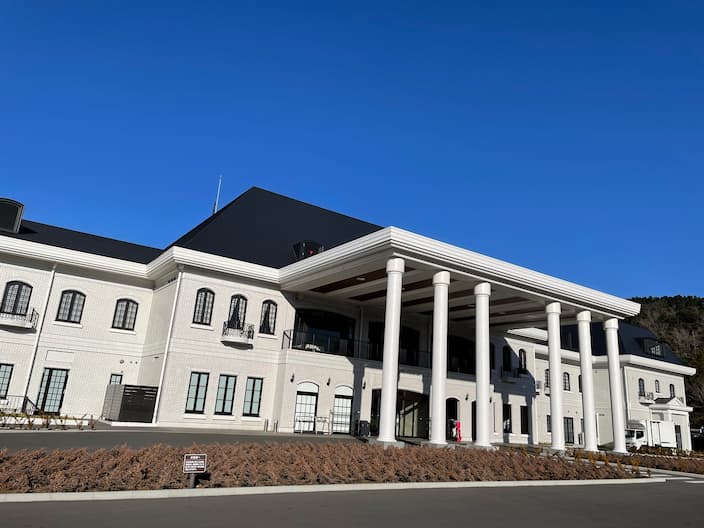
Kazusa Monarch Country Club
| Address | 856-2 Yanashiro, Kimitu city, Chiba |
| TEL | +81-(0)439-29-3100 |
| Website | https://www.kazusamonarch.com/ (Japanese ONLY) |



